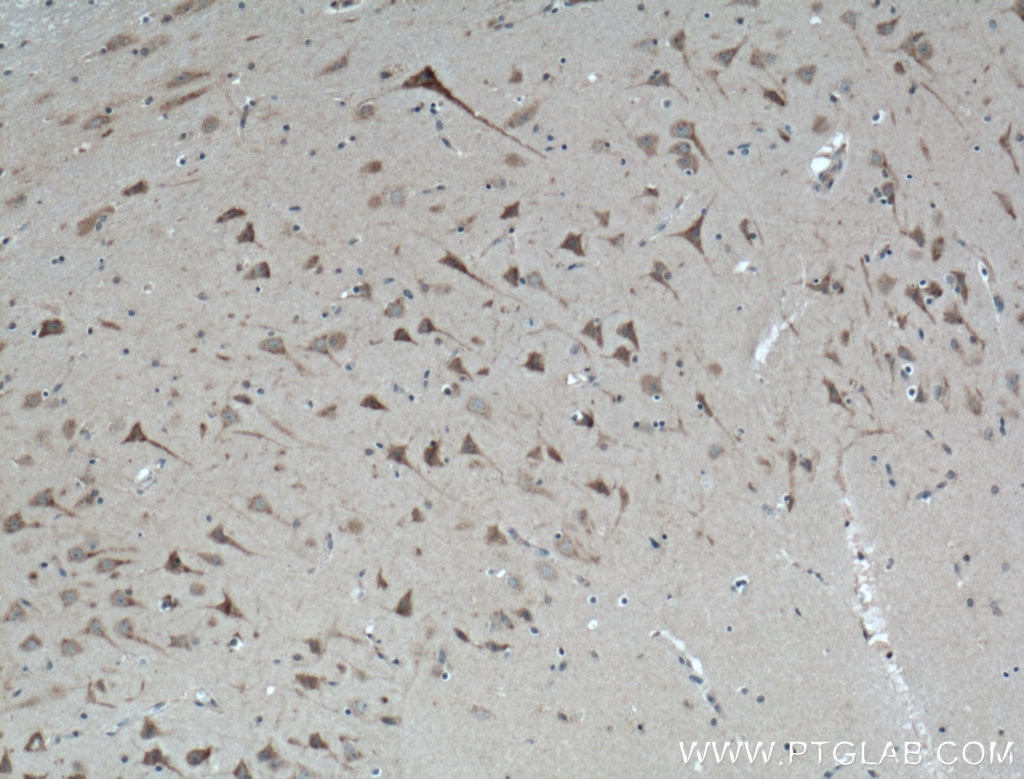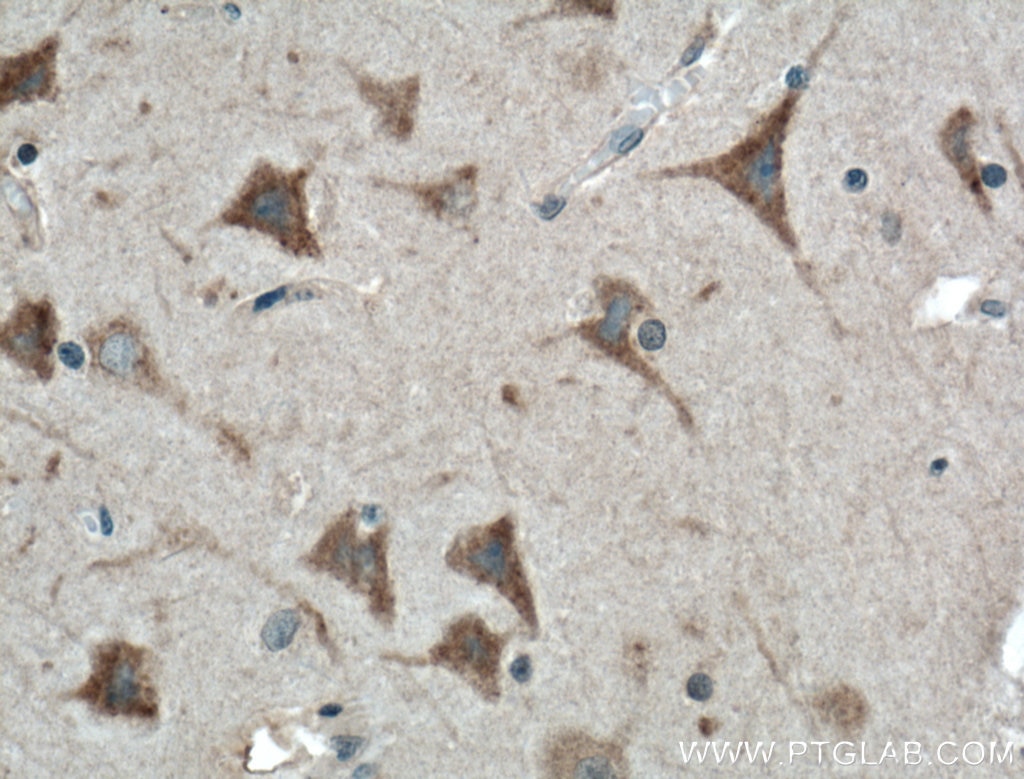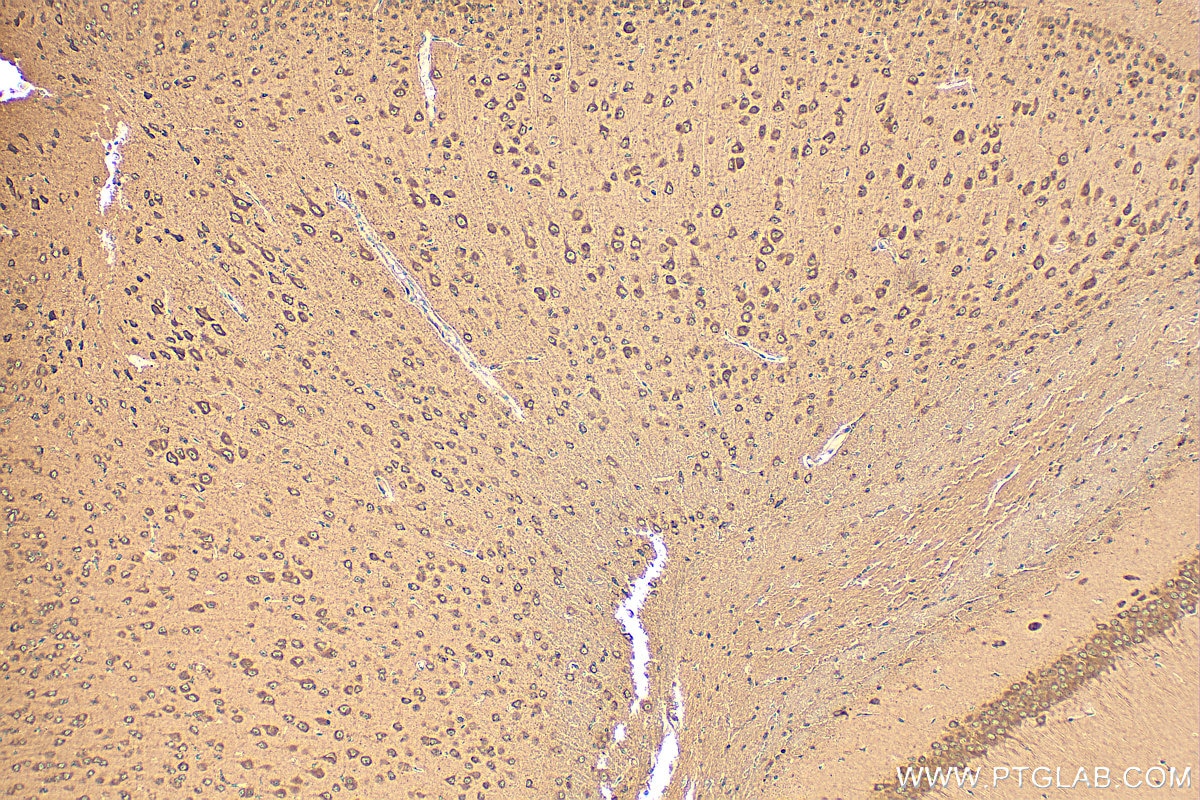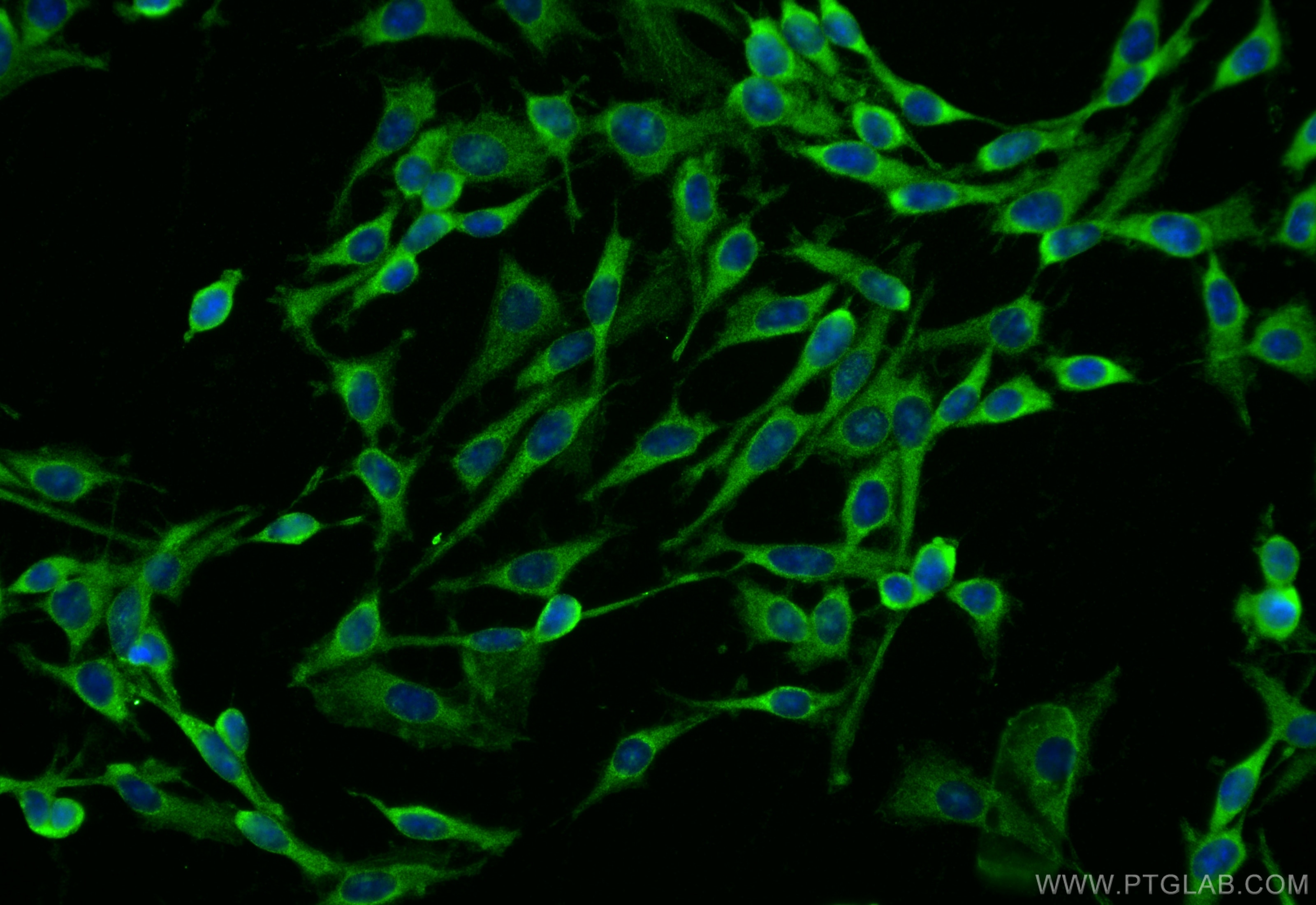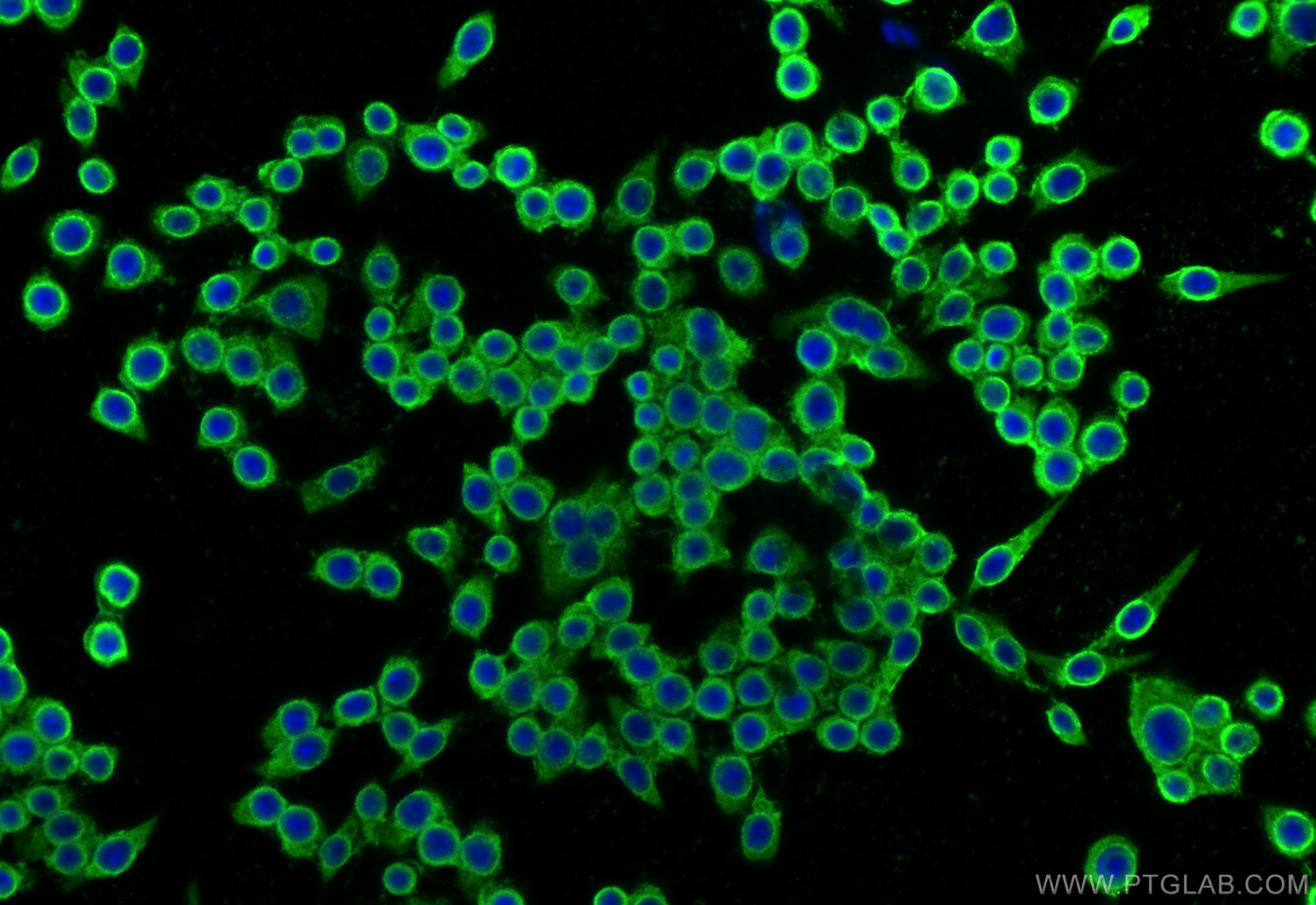Tested Applications
| Positive WB detected in | rat spleen tissue |
| Positive IHC detected in | mouse brain tissue, human brain tissue Note: suggested antigen retrieval with TE buffer pH 9.0; (*) Alternatively, antigen retrieval may be performed with citrate buffer pH 6.0 |
| Positive IF/ICC detected in | C6 cells, RAW 264.7 cells |
Recommended dilution
| Application | Dilution |
|---|---|
| Western Blot (WB) | WB : 1:500-1:2000 |
| Immunohistochemistry (IHC) | IHC : 1:50-1:500 |
| Immunofluorescence (IF)/ICC | IF/ICC : 1:200-1:800 |
| It is recommended that this reagent should be titrated in each testing system to obtain optimal results. | |
| Sample-dependent, Check data in validation data gallery. | |
Published Applications
| KD/KO | See 1 publications below |
| WB | See 4 publications below |
Product Information
20494-1-AP targets ABHD6 in WB, IHC, IF/ICC, ELISA applications and shows reactivity with human, mouse, rat samples.
| Tested Reactivity | human, mouse, rat |
| Cited Reactivity | human, mouse |
| Host / Isotype | Rabbit / IgG |
| Class | Polyclonal |
| Type | Antibody |
| Immunogen |
CatNo: Ag13968 Product name: Recombinant human ABHD6 protein Source: e coli.-derived, PET28a Tag: 6*His Domain: 29-337 aa of BC001698 Sequence: LWPSALIRIYYWYWRRTLGMQVRYVHHEDYQFCYSFRGRPGHKPSILMLHGFSAHKDMWLSVVKFLPKNLHLVCVDMPGHEGTTRSSLDDLSIDGQVKRIHQFVECLKLNKKPFHLVGTSMGGQVAGVYAAYYPSDVSSLCLVCPAGLQYSTDNQFVQRLKELQGSAAVEKIPLIPSTPEEMSEMLQLCSYVRFKVPQQILQGLVDVRIPHNNFYRKLFLEIVSEKSRYSLHQNMDKIKVPTQIIWGKQDQVLDVSGADMLAKSIANCQVELLENCGHSVVMERPRKTAKLIIDFLASVHNTDNNKKLD Predict reactive species |
| Full Name | abhydrolase domain containing 6 |
| Calculated Molecular Weight | 337 aa, 38 kDa |
| Observed Molecular Weight | 35-40 kDa |
| GenBank Accession Number | BC001698 |
| Gene Symbol | ABHD6 |
| Gene ID (NCBI) | 57406 |
| RRID | AB_2878694 |
| Conjugate | Unconjugated |
| Form | Liquid |
| Purification Method | Antigen affinity purification |
| UNIPROT ID | Q9BV23 |
| Storage Buffer | PBS with 0.02% sodium azide and 50% glycerol, pH 7.3. |
| Storage Conditions | Store at -20°C. Stable for one year after shipment. Aliquoting is unnecessary for -20oC storage. 20ul sizes contain 0.1% BSA. |
Background Information
α/β-hydrolase domain 6 (ABHD6) is a lipase linked to physiological functions affecting energy metabolism. ABHD6, which was first identified in the brain ( PMID: 18096503) , is a ubiquitously expressed lipase.
Protocols
| Product Specific Protocols | |
|---|---|
| IF protocol for ABHD6 antibody 20494-1-AP | Download protocol |
| IHC protocol for ABHD6 antibody 20494-1-AP | Download protocol |
| WB protocol for ABHD6 antibody 20494-1-AP | Download protocol |
| Standard Protocols | |
|---|---|
| Click here to view our Standard Protocols |
Publications
| Species | Application | Title |
|---|---|---|
Neuron An ER Assembly Line of AMPA-Receptors Controls Excitatory Neurotransmission and Its Plasticity. | ||
Pharmacol Res Wwl70-induced ABHD6 inhibition attenuates memory deficits and pathological phenotypes in APPswe/PS1dE9 mice | ||
Front Immunol RGMa Participates in the Blood-Brain Barrier Dysfunction Through BMP/BMPR/YAP Signaling in Multiple Sclerosis. | ||
Mol Carcinog ABHD6 suppresses colorectal cancer progression via AKT signaling pathway
|


